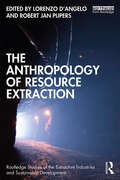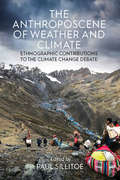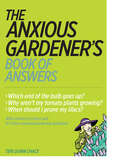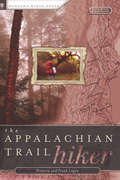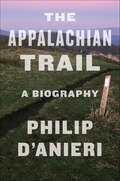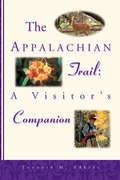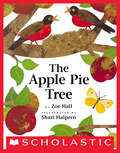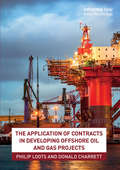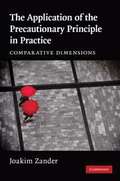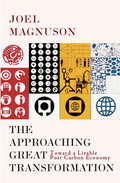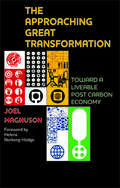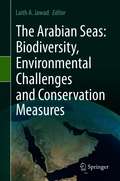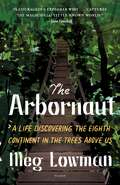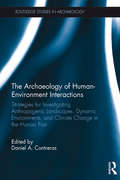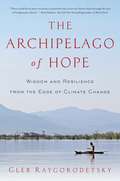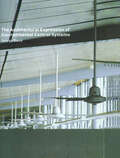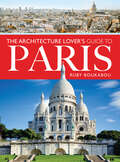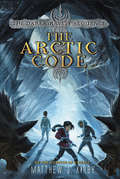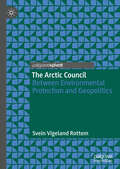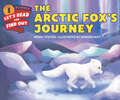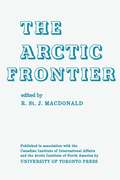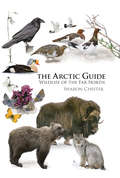- Table View
- List View
The Anthropology of Resource Extraction (Routledge Studies of the Extractive Industries and Sustainable Development)
by Lorenzo D’AngeloThis book offers an overview of the key debates in the burgeoning anthropological literature on resource extraction. Resources play a crucial role in the contemporary economy and society, are required in the production of a vast range of consumer products and are at the core of geopolitical strategies and environmental concerns for the future of humanity. Scholars have widely debated the economic and sociological aspects of resource management in our societies, offering interesting and useful abstractions. However, anthropologists offer different and fresh perspectives – sometimes complementary and at other times alternative to these abstractions – based on field researches conducted in close contact with those actors (individuals as well as groups and institutions) that manipulate, anticipate, fight for, or resist the extractive processes in many creative ways. Thus, while addressing questions such as: "What characterizes the anthropology of resource extraction?", "What topics in the context of resource extraction have anthropologists studied?", and "What approaches and insights have emerged from this?", this book synthesizes and analyses a range of anthropological debates about the ways in which different actors extract, use, manage, and think about resources. This comprehensive volume will serve as a key reading for scholars and students within the social sciences working on resource extraction and those with an interest in natural resources, environment, capitalism, and globalization. It will also be a useful resource for practitioners within mining and development.
The Anthroposcene of Weather and Climate: Ethnographic Contributions to the Climate Change Debate
by Paul SillitoeWhile it is widely acknowledged that climate change is among the greatest global challenges of our times, it has local implications too. This volume forefronts these local issues, giving anthropology a voice in this great debate, which is otherwise dominated by natural scientists and policy makers. It shows what an ethnographic focus can offer in furthering our understanding of the lived realities of climate debates. Contributors from communities around the world discuss local knowledge of, and responses to, environmental changes that need to feature in scientifically framed policies regarding mitigation and adaptation measures if they are to be effective.
The Anxious Gardener's Book of Answers
by Teri Dunn ChaceThe Anxious Gardener's Book of Answers identifies the 100 most common gardening mistakes and gives gardeners the techniques to prevent them. Or, if it's too late and they've already goofed, there are tips to fix the mistake. The book's 24 chapters tackle every kind of gardening disaster, whether it has to do with plants, tools and techniques, or general care and maintenance. Gardeners looking to prune their roses will learn to hold off until late winter to avoid damaging plant tissue. Gardeners that have allowed their mint to overgrow? Dunn advises pulling it out and replanting it in a container to control the root. Organized by common garden topics and designed to be easily dipped in and out of, The Anxious Gardener's Book of Answers offers nuggets of wisdom based on Teri Dunn Chace's years of hands-on gardening experience. Advice is humorously supported by Colleen Coover's delightful illustrations. This accessible guide will transform an anxious gardener into an informed, confident, successful gardener with a mistake-free garden
The Appalachian Trail Hiker
by Frank Logue Victoria LogueThe Appalachian Trail Hiker is a one-stop guide to preparing for and hiking the A.T. Although primarily geared to prepare and sustain the intrepid thru hiker, the book is also a must-have for anyone who wishes to experience the A.T., whether for an hour or for six months.
The Appalachian Trail: A Biography
by Philip D'AnieriThe Appalachian Trail is America&’s most beloved trek, with millions of hikers setting foot on it every year. Yet few are aware of the fascinating backstory of the dreamers and builders who helped bring it to life over the past century. The conception and building of the Appalachian Trail is a story of unforgettable characters who explored it, defined it, and captured national attention by hiking it. From Grandma Gatewood—a mother of eleven who thru-hiked in canvas sneakers and a drawstring duffle—to Bill Bryson, author of the best-selling A Walk in the Woods, the AT has seized the American imagination like no other hiking path. The 2,000-mile-long hike from Georgia to Maine is not just a trail through the woods, but a set of ideas about nature etched in the forest floor. This character-driven biography of the trail is a must-read not just for ambitious hikers, but for anyone who wonders about our relationship with the great outdoors and dreams of getting away from urban life for a pilgrimage in the wild.
The Appalachian Trail: A Visitor's Companion
by Leonard AdkinsA comprehensive naturalist's guide to the Appalachian Trail, the Visitor's Companion contains all the essential information about the AT - from the trail's fascinating history to detailed information on the geology, trees, flowers, birds, amphibians, reptiles, and mammals of the Appalachian Mountains.
The Apple Pie Tree
by Zoe HallWe have a special tree in our yard -- an apple pie tree!Colorful collage illustrations follow each season as an apple tree grows leaves, fragrant blossoms, and tiny green apples. Soon the fruit is big, red, and ready to be picked. It's time to make an apple pie! Here is a celebration of apples and how things grow -- sure to delight young readers all year long.
The Application of Contracts in Developing Offshore Oil and Gas Projects
by Philip Loots Donald CharrettThis book provides a comprehensive overview of the key aspects and contracts involved in the process of developing oil and gas projects, with an emphasis on offshore developments. Project development in oil and gas carries with it numerous unique risks and challenges. By identifying and managing risk through the various contract stages, each stage of the project is seen in perspective and therefore gives readers a better understanding of how that stage was arrived at and what is expected to come later. To do this, the authors use illustrative international case studies from past and current projects, thereby deepening the reader’s understanding and awareness of risk from practical experience, as well as suggesting answers for those who are involved in developing oil and gas projects. The Application of Contracts in Developing Offshore Oil and Gas Projects is intended for project owners, project managers, contractors, finance managers, commercial managers and lawyers who seek to understand the subject from a practical point of view.
The Application of the Precautionary Principle in Practice
by Joakim ZanderThis overview of the role played by the precautionary principle in international trade law, European law and national law compares how precautionary considerations have been applied in the fields of pesticide regulation and the regulation of base stations for mobile telephones in Sweden, the UK and the US. A number of problems in the current application of the precautionary principle are identified and discussed. For example, it is shown that a firm reliance on a wide and open-ended precautionary principle may lead to problems with the consistency, foreseeability, effectiveness and efficiency of measures intended to reduce environmental or health risks. It is suggested that the precautionary principle indeed may be an important tool, but that in order to be acceptable it must be coupled with strong requirements on the performance of risk assessments, cost/benefit analyses and risk trade-off analyses.
The Approaching Great Transformation
by Joel Magnuson Helena Norberg-HodgeHow should we act and think economically in the world as the era of cheap oil comes to an end? The Approaching Great Transformation begins to answer this massive question, focusing on the people and communities already at work on the transition: energy descent pioneers in the UK and the US educating their communities about the road ahead, small enterprises defying traditional "profit" in favor of permanence and sustainability, and cities preparing for a post carbon future.Highlighting the work of thinkers like John Ruskin and E. F. Schumacher, Magnuson here builds on his previous book, Mindful Economics. is already being done. The Approaching Great Transformation extends the ideas put forth in Magnuson's previous book,Mindful Economics, and features a foreword by Helena Noberg-Hodge.
The Approaching Great Transformation: Toward a Liveable Post Carbon Economy
by Joel MagnusonJoel Magnuson's visionary insights into the decline of the Oil Age and life afterward combine sobering warnings with genuine hope. The facts are hard: global oil deposits will soon peak if they haven't already and the violent race to secure what's left has already begun. Meanwhile, our culture of consumption continues its heedless dependence on this and other scarce and fast-disappearing resources including other fossil fuels, water, topsoil, and basic metals. The consequences won't just be expensive gasoline. The very nature of life as we've come to know it will change and Magnuson explains how compounding factors like global warming, skyrocketing debt, and ill-prepared governments stand to turn this inevitable change into a needless catastrophe. But the hope is real: individuals and communities around the world have already begun taking action to shift away from consumer culture. Drawing on the visionary work of E.F. Schumacher, John Ruskin, and other pioneering thinkers, Magnuson argues that mindful and concerted action can shape the future. With an emphasis on current transitional projects like B Corporations and LETS projects, he shows that the true great transformation is already underway and it's up to us to continue it. With a foreword by Helena Norberg-Hodge, founder and director of the International Society for Ecology and Culture (ISEC)
The Arabian Seas: Biodiversity, Environmental Challenges and Conservation Measures
by Laith A. JawadThe Arabian Seas Marine Region encompasses marine areas from Djibouti to Pakistan, including the northern part of Somalia, the Red Sea, the Arabian/Persian Gulf, and parts of the Arabian Sea. Human pressures on the coastal and marine environments are evident throughout the region, and have resulted in harmful environmental effects. Oil and domestic, urban and industrial pollutants in several areas of this part of the world have caused local habitat degradation, eutrophication and algal blooms. Further, coastal landfill, dredging, and sedimentation, as well as nutrient and sediment runoff from phosphate mining, agriculture and grazing, and reduction in freshwater seepage due to groundwater extraction are all contributing to the degradation of coastal environments. This book discusses aspects not covered in other books on the region, which largely focus on marine biodiversity, and examines several environmental challenges that are often ignored, but which have a significant impact on the environment. Evaluating the status quo, it also recommends conservation measures and examines the abiotic factors that play a major main role in the environmental changes. Lastly, the book addresses the biodiversity of the area, providing a general context for the conservation and management measures discussed.
The Arbornaut: A Life Discovering the Eighth Continent in the Trees Above Us
by Meg Lowman“An eye-opening and enchanting book by one of our major scientist-explorers.” —Diane Ackerman, author of The Zookeeper’s WifeNicknamed the “Real-Life Lorax” by National Geographic, the biologist, botanist, and conservationist Meg Lowman—aka “CanopyMeg”—takes us on an adventure into the “eighth continent” of the world's treetops, along her journey as a tree scientist, and into climate actionWelcome to the eighth continent!As a graduate student exploring the rain forests of Australia, Meg Lowman realized that she couldn’t monitor her beloved leaves using any of the usual methods. So she put together a climbing kit: she sewed a harness from an old seat belt, gathered hundreds of feet of rope, and found a tool belt for her pencils and rulers. Up she went, into the trees. Forty years later, Lowman remains one of the world’s foremost arbornauts, known as the “real-life Lorax.” She planned one of the first treetop walkways and helps create more of these bridges through the eighth continent all over the world. With a voice as infectious in its enthusiasm as it is practical in its optimism, The Arbornaut chronicles Lowman’s irresistible story. From climbing solo hundreds of feet into the air in Australia’s rainforests to measuring tree growth in the northeastern United States, from searching the redwoods of the Pacific coast for new life to studying leaf eaters in Scotland’s Highlands, from conducting a BioBlitz in Malaysia to conservation planning in India and collaborating with priests to save Ethiopia’s last forests, Lowman launches us into the life and work of a field scientist, ecologist, and conservationist. She offers hope, specific plans, and recommendations for action; despite devastation across the world, through trees, we can still make an immediate and lasting impact against climate change. A blend of memoir and fieldwork account, The Arbornaut gives us the chance to live among scientists and travel the world—even in a hot-air balloon! It is the engrossing, uplifting story of a nerdy tree climber—the only girl at the science fair—who becomes a giant inspiration, a groundbreaking, ground-defying field biologist, and a hero for trees everywhere.Includes black-and-white illustrations
The Archaeology of Human-Environment Interactions: Strategies for Investigating Anthropogenic Landscapes, Dynamic Environments, and Climate Change in the Human Past (Routledge Studies in Archaeology)
by Daniel A. ContrerasThe impacts of climate change on human societies, and the roles those societies themselves play in altering their environments, appear in headlines more and more as concern over modern global climate change intensifies. Increasingly, archaeologists and paleoenvironmental scientists are looking to evidence from the human past to shed light on the processes which link environmental and cultural change. Establishing clear contemporaneity and correlation, and then moving beyond correlation to causation, remains as much a theoretical task as a methodological one.This book addresses this challenge by exploring new approaches to human-environment dynamics and confronting the key task of constructing arguments that can link the two in concrete and detailed ways. The contributors include researchers working in a wide variety of regions and time periods, including Mesoamerica, Mongolia, East Africa, the Amazon Basin, and the Island Pacific, among others. Using methodological vignettes from their own research, the contributors explore diverse approaches to human-environment dynamics, illustrating the manifold nature of the subject and suggesting a wide variety of strategies for approaching it. This book will be of interest to researchers and scholars in Archaeology, Paleoenvironmental Science, Ecology, and Geology.
The Archaeology of Mediterranean Landscapes
by Kevin WalshFunded by the European Union, the Populus project is a major study of long-term change in Mediterranean Europe involving a multidisciplinary team of archaeologists, palaeoscientists and historians. Each volume focuses on a different methodological or theoretical aspect of Mediterranean archaeology. Environmental specialists participating in regional archaeology projects have contributed much to our understanding of both local and global ecological changes. More than any other area of archaeology, the patterns of long-term change revealed from studying the past have sobering lessons for our human present and future.
The Archipelago of Hope: Wisdom And Resilience From The Edge Of Climate Change
by Gleb RaygorodetskyAn enlightening global journey reveals the inextricable links between Indigenous cultures and their lands—and how it can form the foundation for climate change resilience around the world. One cannot turn on the news today without a report on an extreme weather event or the latest update on Antarctica. But while our politicians argue, the truth is that climate change is already here. Nobody knows this better than Indigenous peoples who, having developed an intimate relationship with ecosystems over generations, have observed these changes for decades. For them, climate change is not an abstract concept or policy issue, but the reality of daily life. After two decades of working with indigenous communities, Gleb Raygorodetsky shows how these communities are actually islands of biological and cultural diversity in the ever-rising sea of development and urbanization. They are an “archipelago of hope” as we enter the Anthropocene, for here lies humankind’s best chance to remember our roots and how to take care of the Earth. These communities are implementing creative solutions to meet these modern challenges. Solutions that are relevant to the rest of us. We meet the Skolt Sami of Finland, the Nenets and Altai of Russia, the Sapara of Ecuador, the Karen of Myanmar, and the Tla-o-qui-aht of Canada. Intimate portraits of these men and women, youth and elders, emerge against the backdrop of their traditional practices on land and water. Though there are brutal realties?pollution, corruption, forced assimilation—Raygorodetsky's prose resonates with the positive, the adaptive, the spiritual—and hope.
The Architectural Expression of Environmental Control Systems
by George BairdThe Architectural Expression of Environmental Control Systems examines the way project teams can approach the design and expression of both active and passive environmental control systems in a more creative way. Using seminal case studies from around the world and interviews with the architects and environmental engineers involved, the book illustrates innovative responses to client, site and user requirements, focusing upon elegant design solutions to a perennial problem. This book will inspire architects, building scientists and building services engineers to take a more creative approach to the design and expression of environmental control systems - whether active or passive, whether they influence overall building form or design detail.
The Architecture Lover's Guide to Paris (City Guides)
by Ruby BoukabouDiscover the architectural history behind Paris’s iconic building, famous landmarks, and charming neighborhoods with this handy visual guidebook.As you stroll the streets of Paris, this informative volume will help you unlock the secrets of the city’s beguiling beauty. Covering the major landmarks as well as dozens of lesser-known architectural gems, The Architecture Lover’s Guide to Paris puts essential history and fascinating details at your fingertips. Whether you are a Paris regular or visiting for the first time, this guide will help you understand how the city acquired its unique design palette. It also offers self-guided walking tours and suggestions of some of the best hotels, restaurants, cafés, churches, parks and more. You’ll discover ancient Roman baths, 17th century mansions, Art Deco theaters, and contemporary cultural complexes. You’ll also find out where to kick back, cocktail or mock-tail in hand, with a panoramic view over the capital. Written by Ruby Boukabou, author of The Art Lover’s Guide to Paris, this book is the perfect companion for anybody intrigued by the City of Light.
The Architecture of Green Economic Policies
by P. K. RaoThe role of environmental analysis in economic policy making has remained largely limited despite vast literature on environmental economics and governance. An effective integration of economic and environmental sciences with pragmatic design of institutions and policies is still urgently needed for practical use. This book offers a policy framework for economic policies that meaningfully integrate environmental and ecological resource factors. Based on analyses and new insights on sustainable development, this book provides pragmatic approaches for economic policy formulation and implementation, as well as for institutional reform. Thematic aspects include trade and environment, poverty and environment, recognition and accounting of factor limitations beyond traditional economic analyses, and an efficient choice of market and regulatory regimes for effective economic, environmental and social governance.
The Arctic Climate System
by Roger G. Barry Mark C. SerrezeThe Arctic can be viewed as an integrated system, characterised by intimate couplings between its atmosphere, ocean and land, linked in turn to the larger global system. This comprehensive, up-to-date assessment begins with an outline of early Arctic exploration and the growth of modern research. Using an integrated systems approach, subsequent chapters examine the atmospheric heat budget and circulation, the surface energy budget, the hydrologic cycle and interactions between the ocean, atmosphere and sea ice cover. Reviews of recent directions in numerical modelling and the characteristics of past Arctic climates set the stage for detailed discussion of recent climate variability and trends, and projected future states. Throughout, satellite remote sensing data and results from recent major field programs are used to illustrate key processes. The Arctic Climate System provides a comprehensive and accessible overview of the subject for researchers and advanced students in a wide range of disciplines.
The Arctic Code
by Matthew J. KirbyPerfect for fans of the Percy Jackson and Seven Wonders series, The Arctic Code is the first book in an epic, fast-paced middle grade adventure trilogy by acclaimed author Matthew J. Kirby.It is the near future, and the earth has entered a new ice age. Eleanor Perry lives in Tucson, one of the most popular destinations for refugees of the Freeze. She is the daughter of a climatologist who is trying to find new ways to preserve human life on the planet. Dr. Perry believes that a series of oil deposits she has found in the Arctic may hold the key to our survival. That's when she disappears--but not before sending Eleanor a series of cryptic messages that point to a significant and mysterious discovery. Now it's up to Eleanor to go find her.This search will launch Eleanor on a breathless race to unlock the mysteries of what has happened to our planet, solving the riddle of the cold that could be humanity's end--and uncovering a threat to the earth that may not be of this world.
The Arctic Council: Between Environmental Protection and Geopolitics
by Svein Vigeland RottemThis pivot introduces the Arctic Council and its role as a platform for dealing with local, national, regional and global challenges of relevance to the “new” Arctic. Against the backdrop of climate change and increasing commercial activity, it considers what a future Arctic should look like, from ideas of total protection to expansive oil and gas extraction. It examines the Arctic’s position on the political agenda, from Norway’s High North hype to a more peripheral place in the foreign policy of the US and explores the Council's role as an important international forum for dialogue and cooperation on Arctic challenges and opportunities, and a significant arena for developing knowledge and learning about a changing region.
The Arctic Fox's Journey (Let's-Read-and-Find-Out Science 1)
by Wendy PfefferRead and find out about the arctic fox’s quest for survival in this colorfully illustrated nonfiction picture book.During the winter, the arctic fox begins an incredible journey. She heads north through the tundra, toward the top of the world. No larger than a house cat, she faces treacherous obstacles, frightening predators, and bitter cold along the way. It seems impossible that she could persist against the elements on her almost 2,000-mile journey—but she does.This is a clear and appealing science book for early elementary age kids, both at home and in the classroom. The Arctic Fox’s Journey is filled with gorgeous, accurate art and includes tons of visual aids like charts, sidebars, an infographic, as well as a hands-on activity all about camouflage.This is a Level 1 Let's-Read-and-Find-Out, which means the book explores introductory concepts perfect for children in the primary grades. The 100+ titles in this leading nonfiction series are:hands-on and visualacclaimed and trustedgreat for classroomsTop 10 reasons to love LRFOs:Entertain and educate at the same timeHave appealing, child-centered topicsDevelopmentally appropriate for emerging readersFocused; answering questions instead of using survey approachEmploy engaging picture book quality illustrationsUse simple charts and graphics to improve visual literacy skillsFeature hands-on activities to engage young scientistsMeet national science education standardsWritten/illustrated by award-winning authors/illustrators & vetted by an expert in the fieldOver 130 titles in print, meeting a wide range of kids' scientific interestsBooks in this series support the Common Core Learning Standards, Next Generation Science Standards, and the Science, Technology, Engineering, and Math (STEM) standards. Let's-Read-and-Find-Out is the winner of the American Association for the Advancement of Science/Subaru Science Books & Films Prize for Outstanding Science Series.
The Arctic Frontier (The Royal Society of Canada Special Publications)
by Ronald MacDonaldThe idea of the Arctic Ocean as a mediterranean sea is a shock to those of us—and that includes most of us—who cannot shake ourselves free of the Mercatorean vision. Yet this theme is repeated by many of the eminent ocntributors to this volume: as Michael Marsden states, "IT is difficult to impress upon the public and industry at large that the most essential quality of the Arctic is not cold, or gold, or polar bears, but a central position in the world community." This book, then, is about the North as a frontier, and about Canada's relations with the world beyond that frontier. It is about the Arctic community of which Canada is one of the major members, along with the Soviet Union, the United States, Denmark, Iceland, and Norway. It is also an exercise in perspective. Canadians have long been aware of the significance of their Atlantic and Pacific frontiers and of the implications of their Southern frontier. This volume points out that Canada is not a three-sided country. While it does not neglect the military importance of the Arctic, it endeavours to widen the scope of interest. But it does not present the familiar arguments about the surpassing importance of the Arctic. It deflates as well as inflates. Its purpose is to assess as precisely as possible the implications of the Arctic frontier, not to induce either visions or nightmares. It is intended not only for Canadians but for all those who are interested in the polar regions or in the shape of the world at large. The papers in this volume were assembled in collaboration by the Canadian Institute of International Affairs and the Arctic Institute of North America.
The Arctic Guide: Wildlife of the Far North
by Sharon ChesterThe Arctic Guide presents the traveler and naturalist with a portable, authoritative guide to the flora and fauna of earth's northernmost region. Featuring superb color illustrations, this one-of-a-kind book covers the complete spectrum of wildlife--more than 800 species of plants, fishes, butterflies, birds, and mammals--that inhabit the Arctic's polar deserts, tundra, taiga, sea ice, and oceans. It can be used anywhere in the entire Holarctic region, including Norway's Svalbard archipelago, Siberia, the Russian Far East, islands of the Bering Sea, Alaska, the Canadian Arctic, and Greenland. Detailed species accounts describe key identification features, size, habitat, range, scientific name, and the unique characteristics that enable these organisms to survive in the extreme conditions of the Far North. A color distribution map accompanies each species account, and alternative names in German, French, Norwegian, Russian, Inuit, and Inupiaq are also provided. Features superb color plates that allow for quick identification of more than 800 species of plants, fishes, butterflies, birds, and mammals Includes detailed species accounts and color distribution maps Covers the flora and fauna of the entire Arctic region
